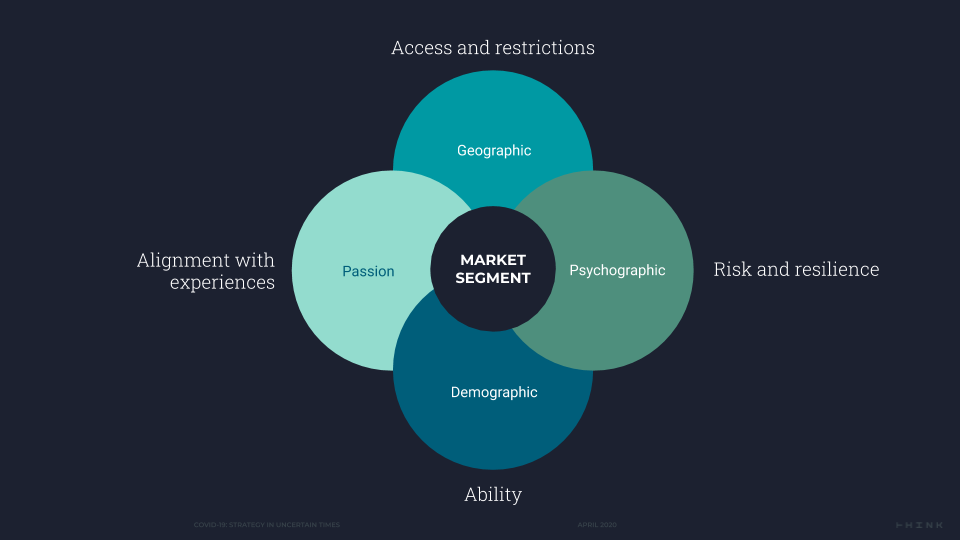As news updates and official advisories continue to evolve, it might feel overwhelming for your destination marketing organization (DMO) to look beyond the now and consider planning for the next phases of the crisis. The deluge of information and resources out there can make it hard to know where to start.
In response to audience questions during Destination Think Virtual Forum on April 7, 2020, Destination Think CEO Rodney Payne and Chief Strategist William Bakker discussed effective ways to invest your limited time and resources to ensure your DMO’s resiliency during all phases of COVID-19.
Consult historical trends and visitor behaviour
No one can predict the future, but your DMO can learn from previous global crises and the impact they have had on human behaviour. When you begin scenario planning for your destination, start by consulting historical case studies and identifying behaviour patterns, especially as they relate to demographic attitudes towards risk post-crisis.
See your audience as people, not numbers
Once you’ve identified broad historical trends, consider diving deeper into your target markets. What kinds of sentiment do your potential visitors carry toward travelling? You’ll need to examine their values, beliefs and passions. “Look beyond geographic segmentation and really focus on what people have in common beyond borders, as we are living in a global environment,” says William.

Account for fear and trepidation during the restart phase
As DMOs begin to transition from mitigation to the restart phase, you cannot expect to revert back to your usual marketing tactics. “Behaviour will be impacted largely by the health situation,” says Destination Think CEO, Rodney Payne. “[Think] about doing your own direct research into your target markets, if you can. Understand their perceptions of risk and plan to adjust communications accordingly once you understand nuances and new behaviours you may not have seen before.”
Measure trends, not snapshots in time
What people say and what they actually do is often very different. “Look for trends, not snapshots,” says William. Analyzing sentiment on any given day will not necessarily be relevant to future actions, he says. Rather, “track this snapshot over time to know when people feel comfortable, who will feel comfortable first and, if they don’t, look for the reasons why.”
When examining behaviour, also factor in digital trends. For example, Visit Scotland is working with travel data company Adara (as per that DMO’s industry update) to extrapolate booking and search patterns. Search volume going up will be a good indicator of their audience’s outlook, and if it’s appropriate to go back into the market.
Consider a range of possible futures
One of the biggest mistakes DMOs can make right now is to latch onto a single scenario. “Avoid the temptation to try and predict the future,” says Rodney. Look at how other destinations who are further ahead in the crisis are managing the public health and economic fallout and build multiple scenarios around that. When scenario planning, construct plans based on various levels of financial support from your funding sources.
Catch up on our Virtual Forum presentation and slides on destination marketing strategy.
Support for your DMO
From Bermuda to California to Campbell River, our team helps tourism destinations respond to crises and work toward recovery with poise and confidence. Speak to us to learn about our collaborative approach to strategy, communications, and creative solutions or click here to send us your RFP.
Feature image credit: Grant Williams, Pexels










0 Comments